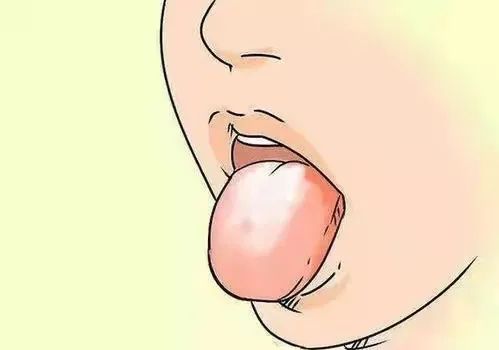Understanding Wind-Heat Cold?
Wind-heat cold is mostly caused by the invasion of wind-heat pathogens, commonly occurring in spring and summer, often accompanied by a sensation similar to heat stroke..
So what are the symptoms of wind-heat cold?
Light aversion to cold, significant fever, difficulty sweating, headache with a feeling of pressure, cough with sticky or yellow phlegm, dry mouth and throat, sore throat, nasal congestion, yellow nasal discharge, thin white or thin yellow tongue coating, red tip of the tongue, and a floating rapid pulse.
Let’s analyze these symptoms one by one.

Light Aversion to Cold:Sometimes there may be no sensation of aversion to cold at all. Even if there is some aversion, it is very mild. This is because the main sensation we feel is the heat pathogen, which, while entering, also brings some wind-cold, hence the slight aversion to cold, but it will never be as pronounced as in wind-cold cold.
Significant Fever:This refers to a high fever. Since the heat pathogen is inherently hot, once it invades, our body’s righteous qi instinctively begins to resist, leading to an increase in heat. Therefore, after a wind-heat cold, body temperature can easily rise very high, especially in children, who often quickly reach 39°C, 40°C, or even higher.

Difficulty Sweating:This means that sweating occurs, but sometimes it does and sometimes it doesn’t, and it cannot be profuse and satisfying. At the same time, sweating does not relieve the heat, and the mood can be quite irritable; these are common symptoms of fever in wind-heat cold.
Head Pressure and Pain:In wind-cold cold, the headache is cold and painful, particularly sensitive to wind. However, the headache caused by wind-heat cold is more of a feeling of pressure. Why? Because of blood heat. Generally, when the heat pathogen invades, body temperature rises, and the head, rich in blood vessels, becomes congested under high temperatures, leading to a sensation of pressure.

Cough:The lungs are known as delicate organs that prefer cool and moist conditions, and they are most afraid of dryness and heat. The lungs govern the skin and open to the nose. Therefore, when the heat pathogen enters through the skin, mouth, or nose, the first organ it invades is the lungs. The heat pathogen quickly scorches the lung yin, and once the lungs become dry and hot, coughing occurs, either as a dry cough or a cough with yellow phlegm, or even hard yellow or brown phlegm. Additionally, it is common for the phlegm to be thick and difficult to expel.

Dry Mouth and Throat:In wind-cold cold, the invading pathogen is cold and does not scorch our body fluids, hence there is no thirst. However, the heat pathogen is different; it depletes our body fluids. Once the fluids are excessively consumed, we naturally feel thirsty and desire to drink water, especially cold water. Additionally, as the lung meridian runs through the throat, if the lung yin is damaged, leading to excess lung heat, we can easily experience symptoms of dry throat and throat pain.

Nasal Congestion:This is similar to the cause of wind-cold cold. The lung qi is reversed and congested in the nasal area. Therefore, both wind-cold and wind-heat colds can present with nasal congestion.
Nasal Discharge:In cases of cold, the discharge is usually clear. However, in cases of heat, it is mostly yellow or purulent.
Tongue Coating:The coating may be thin white or thin yellow. Sometimes the tongue coating may lag behind the body’s condition; even when experiencing wind-heat, the coating may still be thin white. However, the tongue body will noticeably turn red, especially at the tip. The tongue serves as a holographic reflection of the body, and the tip represents the heart and lungs. When there is heat in the lungs, the tip of the tongue will turn red.

Floating Rapid Pulse:When lightly palpating the pulse, it can be easily felt, and it is fast and strong.
Therefore, once we have accurately diagnosed the condition, we know how to address and regulate it.
The treatment principle for wind-heat cold is: dispersing wind-heat with acrid-cool herbs. Using acrid-cool medicinal substances to disperse wind-heat and relieve exterior symptoms.
Thus, whenever you see herbs like Jin Yin Hua (Honeysuckle), Lian Qiao (Forsythia), Ban Lan Gen (Isatis), Niu Bang Zi (Burdock Seed), or Bo He (Peppermint), they are generally used to treat wind-heat conditions.
Alright, that’s all for this simple cold discussion…
We will discuss more detailed colds later; life is long, and we will walk together slowly.

Follow for more
More exciting content
Goose Egg Talks Health

